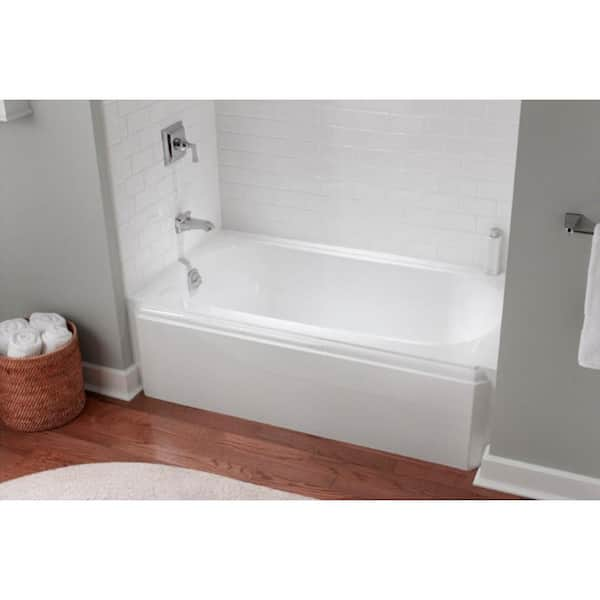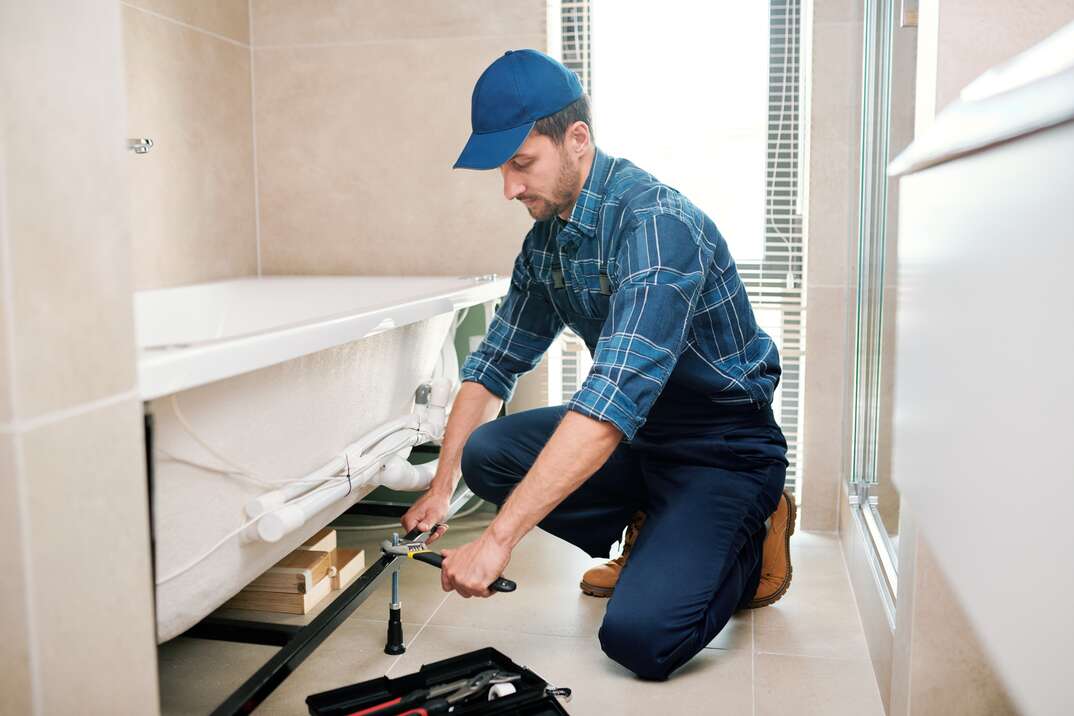Getting Familiar with Plumbing: A Must for Installing a Bathtub
Getting Familiar with Plumbing: A Must for Installing a Bathtub
Blog Article
Listed here in the next paragraph you can locate additional very good data relating to Installing A Bathtub.

Mounting a bath tub isn't specifically brain surgery, but it does need strong plumbing, carpentry, as well as occasionally, tiling skills. Changing an old bath tub with a brand-new one is likewise a reasonably challenging project. If the old bathtub is conveniently easily accessible, the project can relocate speedily; if you have to open a wall to eliminate the old tub and place the new tub, the job is much harder. In either instance, the project is within a house handyman's abilities, although you will need an assistant to move out the old bathtub as well as set in the new one. Ensure you have actually qualified yourself for the work and also are comfortable trying it. Rather than working with a service provider to take over a halfway-completed task, it is much better to take into consideration utilizing one before you begin. Possibilities are you might require an expert plumber to make tube links.
This write-up will assist you install a new tub in your restroom if you have already gotten a new bathtub as well as do not need to change the setup of your previous water pipelines.
Your devices as well as product checklist should make up the following:
Removing Old Touches
If you need to change old taps with brand-new ones as a part of your setup, then the first thing you should do is disconnect the supply of water. After doing so, switch on the taps to drain pipes any type of water continuing to be in the system. The process of eliminating the existing taps can be fairly bothersome due to the limited gain access to that is frequently the instance.
Make use of a basin wrench (crowsfoot spanner) or a faucet tool to reverse the nut that connects the supply pipes to the taps. Have a cloth ready for the remaining water that will originate from the pipelines. When the supply pipelines have been eliminated, use the exact same device to loosen up the nut that holds the faucets onto the bath/basin. You will certainly require to stop the single faucets from turning throughout this procedure. As soon as the taps have been removed, the holes in the bath/basin will have to be cleansed of any old sealing compound.
Prior to carrying on to fit the new taps, compare the pipeline links on the old faucets to the new taps. If the old taps are longer than the new faucets, after that a shank adapter is needed for the new taps to fit.
Fitting New Touches
If the tails of the brand-new faucets are plastic, after that you will certainly require a plastic adapter to stop damages to the thread. One end of the adapter fits on the plastic tail of the tap and also the various other end provides a connection to the current supply pipes.
If you need to fit a monobloc, after that you will certainly call for decreasing couplers, which attaches the 10mm pipeline of the monobloc to the standard 15mm supply pipeline.
Next, position the tap in the mounting opening in the bath/basin ensuring that the washers remain in location in between the faucet and also the sink. Protect the faucet in place with the supplier offered backnut. As soon as the tap is safely in place, the supply pipes can be connected to the tails of the faucets. The faucets can either be linked by using corrugated copper piping or with typical faucet adapters. The former kind ought to be attached to the faucet ends first, tightening just by hand. The supply pipelines can later on be attached to the other end. Tighten up both ends with a spanner after both ends have actually been attached.
Setting up the Tub
Using the two wood boards under its feet, put the bathtub in the called for position. The wood boards are handy in equally spreading the weight of the tub over the area of the boards as opposed to focusing all the weight onto four little factors.
The following goal is to ensure that the tub is leveled all round. This can be accomplished by checking the level and also changing the feet on the bath tub till the spirit level reviews level.
To install faucets, fit the bottom of the furthest versatile faucet port to the ideal supply pipeline by making a compression join; then do the same for the various other tap.
Switch on the water supply and also check all joints and also new pipework for leakages and also tighten them if necessary. Fill the bath tub as well as likewise examine the overflow electrical outlet and the regular outlet for leakages.
Finally, fix the bath paneling as defined in the supplier's user's manual. Tiling as well as sealing around the bath tub should wait until the bathtub has actually been used at least once as this will certainly resolve it right into its last setting.
Preparing for the Installment
To start with, the sustaining structure provided with the bathroom ought to be fitted (if required) according to the producer's directions. Next off, fit the faucets or mixer to the bathtub. When suitable the faucet block, it is very important to make certain that if the faucet includes a plastic washing machine, it is fitted in between the bath and the taps. On a plastic bath, it is likewise reasonable to fit a supporting plate under the faucets unit to stop stress on the bath tub.
Fit the adaptable tap adapters to the bottom of the two taps using 2 nuts and also olives (in some cases provided with the bathtub). Fit the plug-hole outlet by smearing mastic filler round the sink outlet opening, and afterwards pass the outlet via the hole in the bathroom. Utilize the nut provided by the maker to fit the plug-hole. Analyze the plug-hole electrical outlet for an inlet on the side for the overflow pipeline.
Next off, fit the end of the flexible overflow pipeline to the overflow outlet. After that, screw the pipeline to the overflow face which should be fitted inside the bathroom. Ensure you make use of every one of the provided washers.
Link the trap to the bottom of the waste electrical outlet on the bath tub by winding the thread of the waste electrical outlet with silicone mastic or PTFE tape, and also screw on the trap to the outlet. Attach all-time low of the overflow tube in a similar manner.The bath should currently prepare to be fitted in its last position.
Tiling Around the Tub
In the location where the bath satisfies the ceramic tile, it is necessary to seal the joins with a silicone rubber caulking. This is very important as the fitting can relocate sufficient to split a stiff seal, causing the water to permeate the wall surface between the bathroom and the tiling, resulting in issues with moisture and also possible leakages to the ceiling below.
You can pick from a range of coloured sealers to blend in your components as well as fittings. They are sold in tubes as well as cartridges, and can sealing gaps up to a size of 3mm (1/8 inch). If you have a bigger space to fill, you can fill it with spins of drenched newspaper or soft rope. Keep in mind to always load the bathtub with water prior to securing, to enable the activity experienced when the tub is in usage. The sealant can split relatively very early if you do not think about this motion prior to securing.
Additionally, ceramic coving or quadrant floor tiles can be made use of to edge the bathroom or shower tray. Plastic strips of coving, which are easy to use and cut to size, are also conveniently available on the market. It is suggested to fit the tiles using waterproof or water-proof adhesive and also cement.
Bathtub Installation
How Important Is A Bathtub To Your Home?
High-quality baths, showers, and other bathroom updates are necessary when considering a smart investment in your home. It’s a room that you go to every day and one that is constantly being used by guests.The bathroom is one of the top trafficked rooms in a home and also one of the most valuable in terms of home resale.
Install Piping Before Tub
You will be using your existing drain and waste vent system, but pipes required include the hot and cold water supply lines and a pipe leading to a shower head. A mixing valve and shower head are also needed. Air chambers may be required.
Position the Tub
Lower the tub into place so that the continuous flange fits against the wall studs and rests on 1’x4' or 2’x4' supports. Anchor the tub to the enclosure with nails or screws inserted through the flanges into the studs.
NOTE: Remember, bathtubs and shower stalls may require support framing. A bathtub filled with water is extremely heavy, so check building codes and framing support before installing the tub.
Assemble Drain Connections
Assemble the bathtub drain connections by connecting the tub overflow with the tub drain above the trap, not beyond it. The trap will have a compression fitting that screws over the arm of the overflow assembly.
Place a Pipe For the Shower Head
First, locate a brass female threaded winged fitting and attach it to a framing support via a screw or a nail. Then run a pipe up the wall for the shower head. Sweat or solder the other side of the brass fitting to the top of the pipe.
Attaching Hot and Cold Water Lines
Attach your water lines for both hot and cold by sweating these directly into the hot and cold ports of the mixing valve. The mixing valve will be how water enters the tub’s system, not by the pipes themselves.
Install the Spout
Extend a piece of 1/2 inch pipe, or whichever length is specified in the manufacturer’s instructions, for the tub spout. Sweat on a male threaded fitting at the end of the pipe or use a brass nipple of the proper length and a 1/2 inch cap.
NOTE: At this point you should have your rough-in plumbing work inspected before proceeding further.
Check For Leaks
Restore the water pressure and check the drain connection and the supply pipes for any sign of leaking.
estore the Bathroom Wall
Replace the wall with moisture-resistant drywall as a base for your wall covering. Seal the joints between the wall and your new tub with silicone caulk as protection against water seepage.
https://www.berkeys.com/2016/12/02/bathtub-installation-dallas/

I'm just very enthusiastic about A Step-by-Step Guide to Installing a Bathtub and I hope you enjoyed the new page. Do you know somebody else who is excited about the topic? Why not share it. Many thanks for going through it.
We've got you, ring now! Report this page